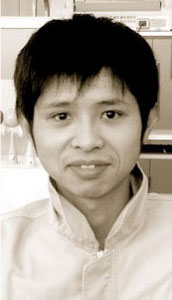MANUFACTURING PROCESS
YAMAGATA KOUBOU prides itself in producing authentic Kendama made by skilled Japanese artisan and their professional craftsmanship. Our kendama are used in the official competitions. In order for the players to perform a variety of thchniques at these competitions, we maintain a high standard for the quality and precision of every kendama we produce.
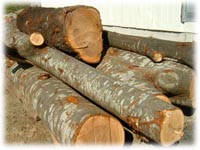
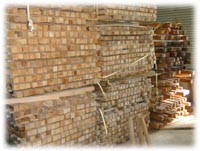
01.From raw wood to lumber
“Beech (Buna)”
Chiefly used as a wood in flooring and furniture it has a very dense linear texture, and while being hard wood it is comparatively easy to work with.
“Japanese Zelkova (Keyaki)”
Chiefly used in Japanese and western furniture and flooring, a hard wood that while being difficult to work with there are rarely any imperfections.
“Cherry (Sakura)”
Chiefly used in furniture, a fairly hard wood that has few warps or curves and is easy to work with.
“Painted Maple (Itaya Kaede)”
Chiefly used in furniture, the color of this wood varies from pinkish gray to a light pinkish brown and has a silk like luster. Difficult to split.
“Japanese Pagoda Tree (Enjyu) ”
Chiefly used in works of art, it is used for alcove posts. For many years it has been planted in the north corner of a property in Japan as a talisman to ward off disasters. *The two stacks of lumber on the left are beech, the stack on the right is cherry.

02.From lumber to logs
This is the process of turning the lumber into logs.

03.Tama(ball) manufacturing process
This is the process of rough hewing the logs into the shape of tama (ball).
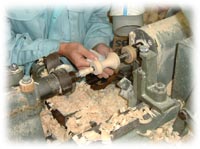
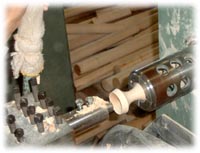
04.Sara(cup) manufacturing process
First rough hew the logs the same as the tama (ball) process. Then the sara's (cups') depression is roughly hewn.

05.Ken(stick) manufacturing process
This is the process of rough hewing the logs into the ken (stick) shape.

06.Painting of the Tama(ball)
This is the process of painting the tama (ball). This tama (ball) is in the middle of drying.

07.The manufacturing of the Tama no ana(ball's hole)
This is the process of making the flared out hole in the tama (ball) for the ken (stick) to precisely fit.

08.Assembly / Quality Inspection
This is the process of opening the flared out hole in the tama (ball) for the ken (stick) to precisely fit.

